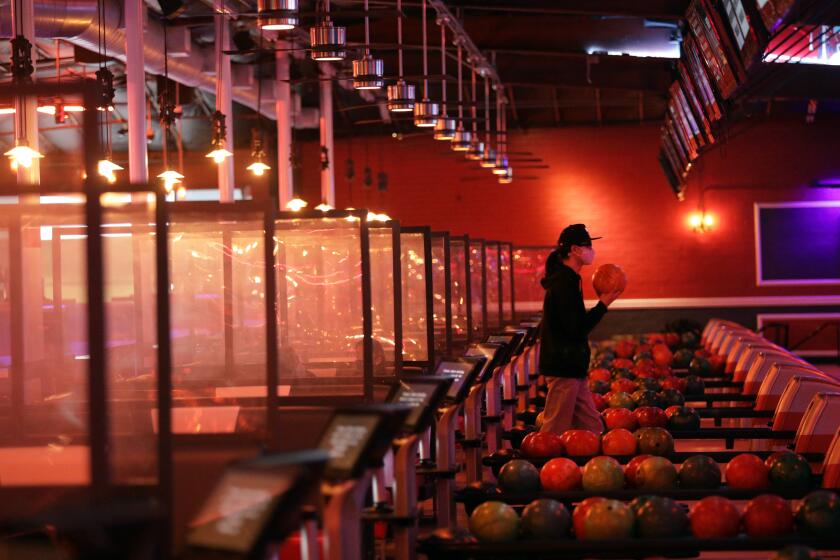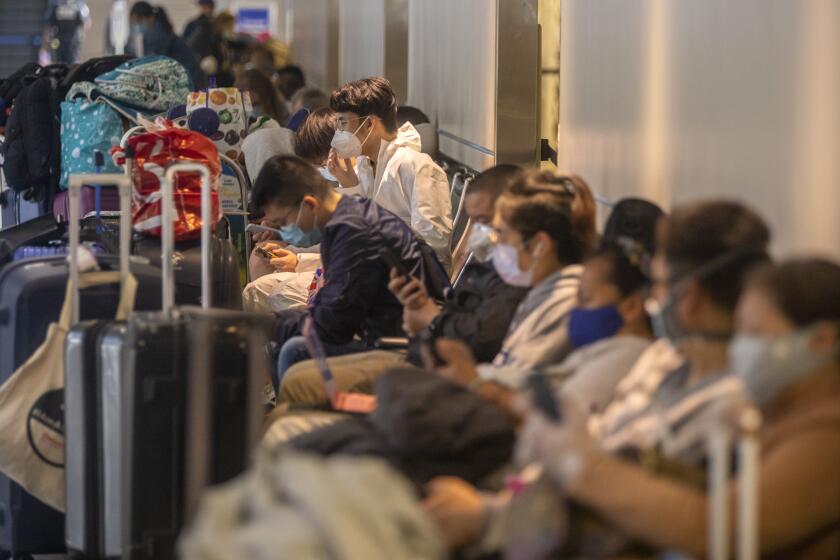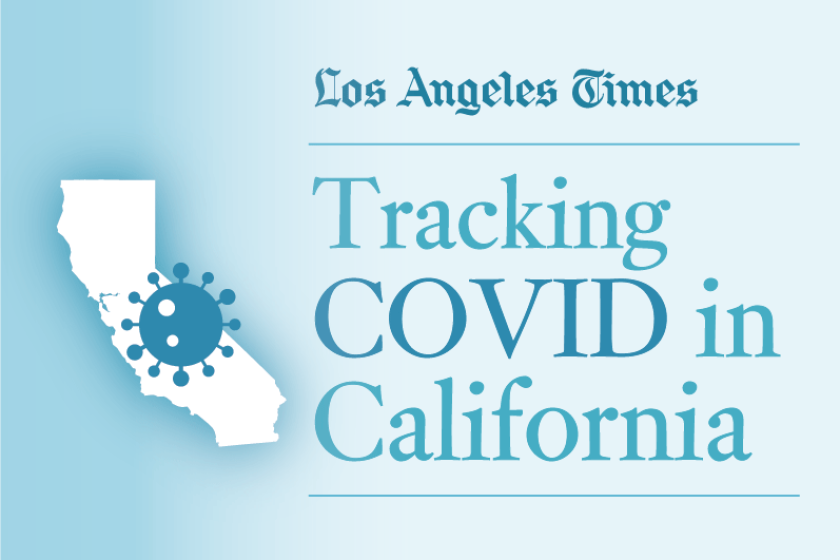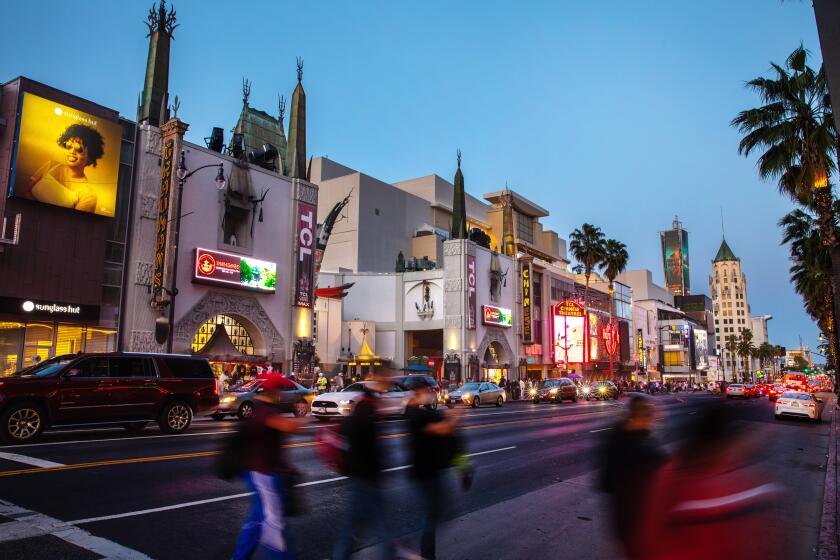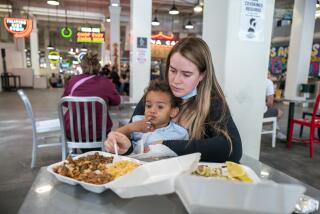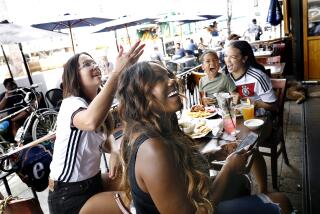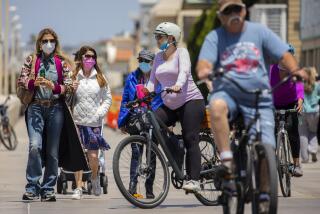L.A. County reopening: What to know about bars, indoor concerts, theaters and more
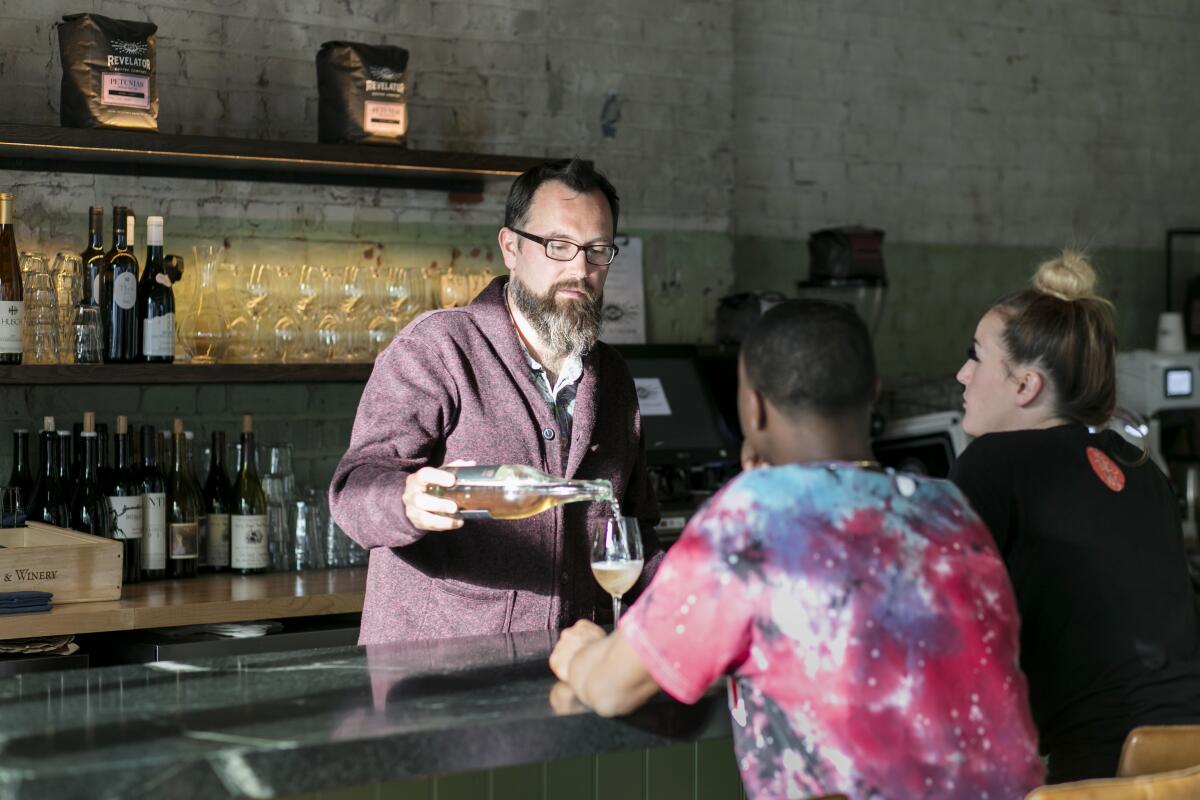
With coronavirus cases continuing to drop along with COVID-19 deaths and hospitalizations, large parts of California are reopening at a rapid clip.
On Monday, Los Angeles County entered the orange tier, which allows the further reopening of retailers, bars, breweries, bowling alleys and other institutions.
Here is what changes:
Orange tier reopening rules
- Bars that don’t serve food will be permitted to reopen outdoors only provided they close at 10 p.m., space tables eight feet apart and limit them to six people from up to three different households. Patrons will be limited to 90-minute visits and required to wear face coverings when they’re not eating or drinking, and to eat or drink only when they are seated. Counter seating and live entertainment remain prohibited.
- Breweries, wineries and distilleries that don’t serve meals can reopen indoors at 25% capacity or 100 people, whichever is fewer, provided they follow the same restrictions as bars and also require reservations for indoor seating, refrain from television viewing indoors and limit indoor tables to six people from the same household.
- Bowling alleys, indoor card rooms and indoor pools can reopen at up to 25% capacity.
County officials say moving to a less restrictive category in California’s reopening blueprint is a hard-fought gain in the battle against COVID-19.
- Grocery and retail stores, hair salons, barbershops and personal care services will be permitted to raise capacity from 50% to 75%, although the public health department said it is strongly recommending that grocery stores continue to operate at 50% capacity until April 15 to allow more workers to be vaccinated, according to a news release.
- Other establishments also can raise their capacity, including houses of worship, museums, zoos and aquariums (from 25% to 50%); restaurants and movie theaters (from 25% or 100 people, whichever is fewer, to 50% or 200 people, whichever is fewer); and indoor gyms and yoga studios (from 10% to 25%).
- Amusement parks, which were permitted to reopen Thursday, as of Monday can raise their capacity from 15% to 25%.
- Outdoor sports and live performances, which were permitted to allow limited fan attendance starting Thursday, as of Monday can increase from 20% to 33% capacity.
Nationally, there has been an 8% week-over-week increase in the average daily number of new coronavirus cases, with much of the increase in Michigan, the New York region and New England. Experts are uncertain if it will remain contained.
- Youth and adult recreational sports leagues can apply to the public health department for approval for athletic events, competitions or tournaments involving more than two teams.
Indoor venues
In the coming weeks, more reopenings are likely in L.A. County and other parts of California.
California will allow indoor live events to resume with limitations beginning later this month, meaning an imminent return of activities like concerts, sports contests and theatrical performances.
Here are details:
- The changes to the state’s reopening blueprint, which go into effect April 15, reflect two parallel trends, officials say. First, California is continuing to gain ground in its battle against the coronavirus, with the numbers of newly confirmed cases and related hospitalizations continuing to trend downward. And second, the state’s vaccine rollout is chugging along, with hundreds of thousands of doses being administered each day.
For venues with a capacity of up to 1,500 people, the new rules will be:
- In the red tier, the state’s second strictest, attendance would be limited to 10% of capacity or 100 people — though that could increase to 25% if all guests are tested for the coronavirus or show proof that they’ve been fully vaccinated.
- In the next step up the ladder, the orange tier, the capacity cap would be 15% or 200 people, and increase to 35% if all guests are tested or fully vaccinated.
- Maximum capacity would rise to 25% or 300 people in the least restrictive yellow tier and could grow to 50% if everyone is tested or completely vaccinated.
For larger-capacity venues, testing or proof of vaccination would be required and attendance limited to 20% of capacity in the red tier. The threshold would be 10% or 2,000 people in the orange tier — and could increase to 35% if all attendees are tested or show proof of full vaccination.
The cap is also set at 10% or 2,000 people in the yellow tier, though it could increase to 50% if all guests are tested or fully vaccinated.
- Venues can also choose to separate people into sections based on their vaccination status. Those who are fully vaccinated could sit shoulder-to-shoulder, but they still must wear masks, state Public Health Officer Dr. Tomás Aragón said.
- At first, people will have to bring their vaccination card with them. But “we anticipate that in the future that the solution will be digital,” meaning people could potentially show proof of vaccination on their cellphones.
Movie theaters, museums and theme parks across Southern California have begun reopening within COVID-19 guidelines. Call it our spring awakening.
More to Read
Start your day right
Sign up for Essential California for news, features and recommendations from the L.A. Times and beyond in your inbox six days a week.
You may occasionally receive promotional content from the Los Angeles Times.
